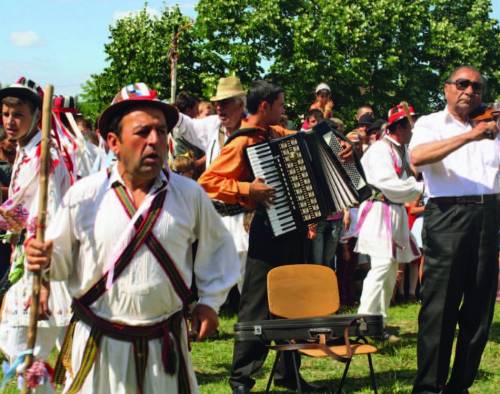Căluş ritual
Inscribed in 2008 (3.COM) on the Representative List of the Intangible Cultural Heritage of Humanity (originally proclaimed in 2005)
Performed in the Olt region of southern Romania, the Căluş ritual dance also formed part of the cultural heritage of the Vlachs of Bulgaria and Serbia. Although the oldest documented music used in this dance dates from the seventeenth century, the ritual probably derived from ancient purification and fertility rites using the symbol of the horse, which was worshipped as an embodiment of the sun. The ritual’s name derives from the Căluş, the wooden part of the horse’s bridle. The Căluş ritual features a series of games, skits, songs and dances, and was enacted by all-male Căluşari dancers to the accompaniment of two violins and an accordion. Young men used to be initiated into the ritual by a vataf (master) who had inherited the knowledge of descântece (magic charms) and the dance steps from his predecessor. Groups of Căluşari dancers, sporting colourful hats, embroidered shirts and trousers adorned with small jingling bells, perform complex dances, which combine stamping, clicking of the heels, leaping and swinging of the legs.
According to tradition, groups of dancing and chanting Căluşari, who were thought to be endowed with magical healing powers, went from house to house, promising good health and prosperity to villagers.
Until today, Căluşari meet to celebrate their dancing and musical prowess on Whit Sunday. Testifying the rich cultural diversity of Romania, the Căluş ritual is also widely promoted at folklore festivals, such as the Caracal festival in the region of Olt, turning it into a veritable national symbol.






